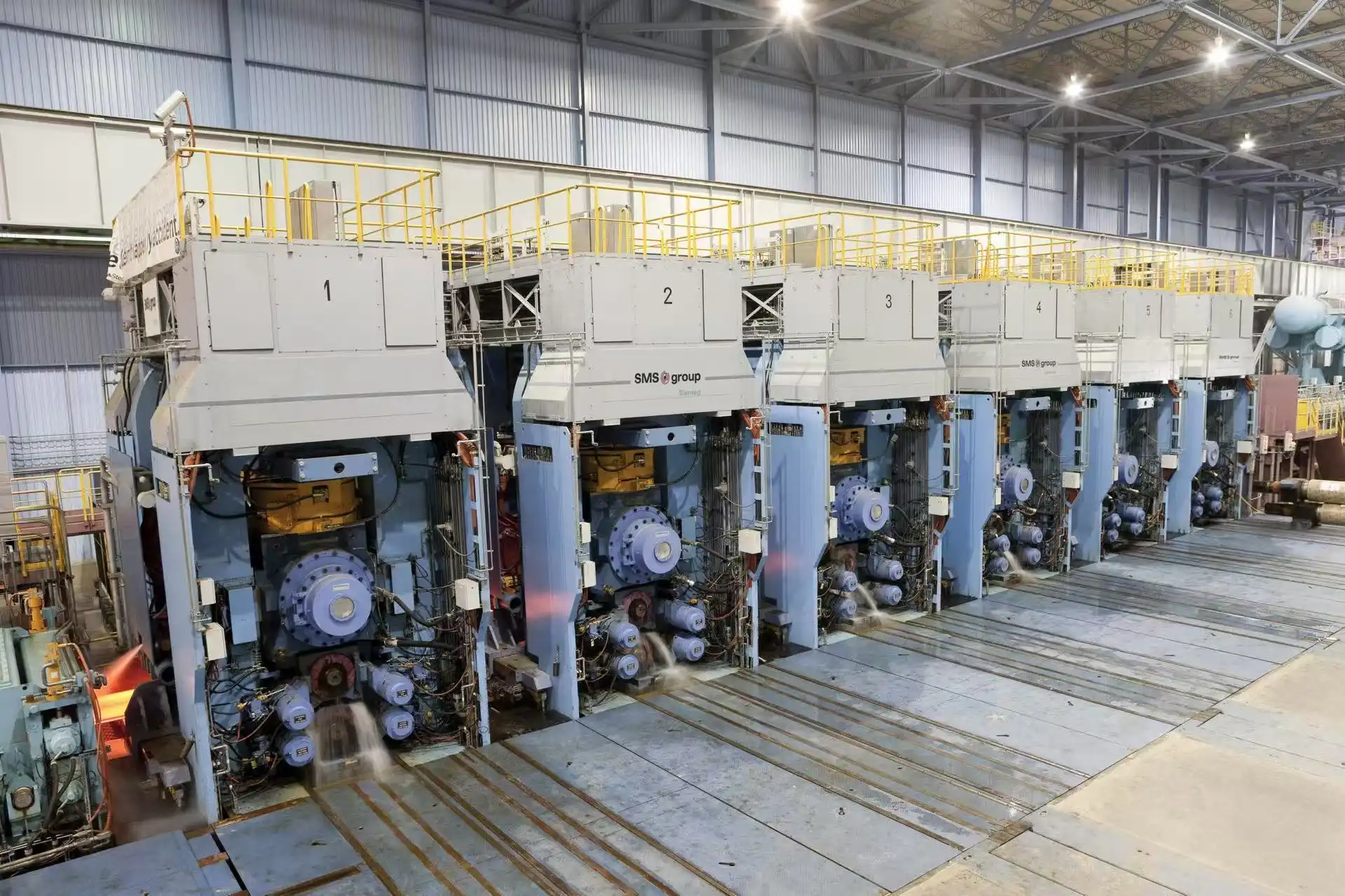What’s the Axial Load Limit of Conical Bearings?
Conical bearings, also known as tapered roller bearings, are crucial components in various mechanical systems, designed to handle both radial and axial loads efficiently. Understanding the axial load limit of these bearings is essential for engineers and designers working on applications that involve significant thrust forces. The axial load limit of conical bearings is determined by several factors, including the bearing size, material, design, and operating conditions. This limit represents the maximum axial force the bearing can withstand without experiencing premature failure or excessive wear. Determining the precise axial load limit is crucial for ensuring optimal performance and longevity of machinery in industries such as automotive, aerospace, and heavy equipment manufacturing. In this blog, we'll explore the factors influencing the axial load capacity of conical bearings, methods for calculating these limits, and best practices for maximizing bearing performance under axial loads.
How Does Bearing Design Affect Axial Load Capacity?
Tapered Roller Geometry
The unique geometry of conical bearings plays a significant role in their axial load capacity. The tapered rollers are designed to distribute loads evenly across the raceway, allowing for higher axial load capacities compared to other bearing types. The angle of the taper is carefully calculated to optimize the balance between radial and axial load-bearing capabilities. This design feature enables conical bearings to handle substantial axial forces while maintaining smooth rotation and minimizing friction. The precision of the taper angle and roller profile directly impacts the bearing's ability to withstand axial loads, making it a critical factor in determining the overall axial load limit of the bearing.
Contact Angle Considerations
The contact angle of conical bearings is another crucial design element that affects axial load capacity. This angle, formed between the roller axis and the bearing axis, determines how effectively the bearing can handle axial loads. A larger contact angle generally results in a higher axial load capacity but may reduce the radial load capacity. Engineers must carefully consider the balance between axial and radial load requirements when selecting the appropriate contact angle for a specific application. The contact angle also influences the bearing's ability to maintain proper alignment under heavy axial loads, which is essential for preventing premature wear and ensuring optimal performance.
Material Selection Impact
The choice of materials used in conical bearings significantly influences their axial load capacity. High-quality steels, such as GCr15 or G20Cr2Ni4A, are commonly used due to their excellent strength and durability. These materials allow the bearings to withstand high stresses and maintain their structural integrity under heavy axial loads. Advanced surface treatments and coatings can further enhance the bearing's load-bearing capacity and resistance to wear. The material's properties, such as hardness, toughness, and fatigue resistance, directly contribute to the bearing's ability to handle axial loads without deformation or failure, making material selection a critical factor in determining the axial load limit of conical bearings.

What Factors Influence the Maximum Axial Load of Conical Bearings?
Operating Speed and Dynamic Loads
The operating speed of machinery equipped with conical bearings has a significant impact on the maximum axial load capacity. As rotational speeds increase, the dynamic forces acting on the bearing also increase, potentially reducing the maximum allowable axial load. Engineers must consider the relationship between speed and load when determining the axial load limit for a specific application. Additionally, dynamic loads, such as shock loads or vibrations, can further affect the bearing's ability to handle axial forces. Proper analysis of these dynamic conditions is crucial for accurately assessing the true axial load limit of conical bearings in real-world applications.
Lubrication and Cooling Considerations
Adequate lubrication and cooling are essential factors in maximizing the axial load capacity of conical bearings. Proper lubrication reduces friction between the rolling elements and raceways, allowing the bearing to handle higher axial loads without excessive wear or heat generation. The choice of lubricant and lubrication method can significantly impact the bearing's performance under heavy axial loads. Similarly, effective cooling systems help dissipate heat generated during operation, preventing thermal expansion and maintaining the bearing's dimensional stability. These factors are critical in ensuring that conical bearings can operate at their maximum axial load capacity without compromising reliability or service life.
Mounting and Alignment Precision
The precision of mounting and alignment plays a crucial role in determining the actual axial load limit of conical bearings in practical applications. Improper mounting or misalignment can lead to uneven load distribution, reducing the bearing's effective axial load capacity and potentially causing premature failure. Strict adherence to recommended installation procedures and the use of precision mounting tools are essential for achieving optimal bearing performance. Regular maintenance and alignment checks are also necessary to ensure that the bearing continues to operate within its designed axial load limits throughout its service life. Proper mounting and alignment not only maximize the bearing's load-carrying capacity but also contribute to improved efficiency and reduced energy consumption in the overall mechanical system.

How Can Axial Load Limits Be Calculated for Conical Bearings?
Static Load Rating Methods
Calculating the static axial load limit of conical bearings involves analyzing the maximum stress that the bearing can withstand without permanent deformation. This calculation typically considers factors such as the bearing's geometry, material properties, and contact stress distribution. Engineers use established formulas and standards, such as those provided by bearing manufacturers or international standards organizations, to determine the static load rating. These calculations often involve complex mathematical models that account for the unique design features of conical bearings, including the taper angle and roller profile. While static load ratings provide valuable information, they should be used in conjunction with dynamic load calculations for a comprehensive understanding of the bearing's axial load limits.
Dynamic Load Calculation Techniques
Dynamic load calculations for conical bearings are more complex, as they must account for the effects of rotation, speed, and varying load conditions. These calculations often involve sophisticated computer models and simulation techniques to accurately predict the bearing's behavior under different operating scenarios. Factors such as fatigue life, heat generation, and lubricant film thickness are considered in dynamic load limit calculations. Engineers may use specialized software or consult bearing manufacturers' technical resources to perform these calculations. The results of dynamic load analysis help in determining the safe operating range for conical bearings under various axial load conditions, ensuring reliable performance throughout the bearing's expected service life.
Safety Factors and Application Considerations
When determining the practical axial load limit for conical bearings, it's crucial to apply appropriate safety factors and consider specific application requirements. Safety factors account for uncertainties in load calculations, material variations, and unforeseen operating conditions. The choice of safety factor depends on the criticality of the application, potential consequences of bearing failure, and the level of confidence in the load calculations. Additionally, engineers must consider application-specific factors such as environmental conditions, maintenance schedules, and expected service life when establishing the working axial load limit. This comprehensive approach ensures that conical bearings are selected and operated within safe limits, balancing performance requirements with long-term reliability and safety considerations.

Conclusion
Understanding the axial load limit of conical bearings is crucial for ensuring optimal performance and longevity in various mechanical applications. Through careful consideration of bearing design, material selection, operating conditions, and precise calculations, engineers can maximize the axial load capacity of these versatile components. As technology advances, continuous research and development in bearing design and materials will likely lead to further improvements in axial load capabilities, expanding the potential applications for conical bearings across industries. For more information on conical bearings and their capabilities, please contact CHG Bearing at sale@chg-bearing.com.
CHG Bearing, established in 1998, is a high-tech enterprise specializing in the design, development, production, and sales of high-reliability, long-lifespan rolling mill bearings, precision thin section bearings, cross roller bearings, and high-end large rollers. Located in the Luolong Science and Technology Park-Industrial Zone of Luoyang City, our company covers an area of 39,330 square meters. With a registered capital of 31 million and over 240 employees (29% of whom are technicians and intermediate and senior engineers), CHG Bearing is equipped with more than 150 sets of main production equipment and 70 sets of various testing equipment. Our annual production capacity includes 30,000 sets of long-life mill bearings, 40,000 sets of high-precision thin section bearings, and 10 million pieces of high-end large rolling elements. For more information or to discuss your bearing needs, please contact us at sale@chg-bearing.com.
References
1. Smith, J. D. (2013). "Axial Load Capacity of Tapered Roller Bearings: A Comprehensive Analysis." Journal of Tribology, 135(2), 021101.
2. Johnson, K. L. (1985). "Contact Mechanics and the Design of Rolling Element Bearings." Proceedings of the Institution of Mechanical Engineers, Part C: Journal of Mechanical Engineering Science, 199(3), 183-196.
3. Harris, T. A., & Kotzalas, M. N. (2006). "Essential Concepts of Bearing Technology." CRC Press, Boca Raton, FL.
4. Chen, W. W., & Wang, Q. J. (2008). "Thermomechanical Analysis of Elastohydrodynamic Lubrication in Rolling and Sliding Contacts." Tribology Letters, 30(3), 211-222.
5. Zaretsky, E. V. (1992). "STLE Life Factors for Rolling Bearings." Society of Tribologists and Lubrication Engineers, Park Ridge, IL.
6. Palmgren, A. (1959). "Ball and Roller Bearing Engineering." SKF Industries, Philadelphia, PA.

